8. Naked Lunch (David Cronenberg, 1991)
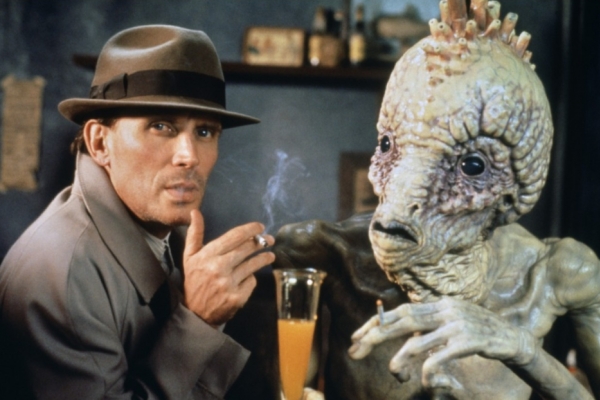
Canadian director David Cronenberg has been making challenging films since the beginning of his career. Whether it be the monsters and abominations from his earlier films, characterized by body horror and explorations of the relationships between the body, the self and the others; or his contemporary films that take a subtler route, replacing the blatant horror for a psychological sensation of discomfort, he has often looked for ways to make the viewer feel disgusted and flummoxed.
A great example of his oeuvre is “Videodrome,” in which he criticizes television and mass media, but instead of settling with a shallow and clichéd exposition of the evils of TV, he turned the film into an ontological exploration of the relationship between the mind, the body, the truth, and television.
In “Naked Lunch,” based on a novel by William S. Burroughs, one of the most prominent figures in beat literature, he tells the story of Bill Lee, an exterminator who gets involved in a secret plot manufactured by giant bugs in an African town.
The story of the film might not say much, but the real magic is found in the mise-en-scène, in the actual manifestation of the themes in the film, going from drug addiction, the creative process of the artist, and the paranoia that usually accompanies the users of certain drugs. Just as with the novel, the film is confusing and ultimately pointless, for it seamlessly merges reality and drug-induced hallucinations, making it difficult to actually determine what happened.
9. In the Mouth of Madness (John Carpenter, 1994)
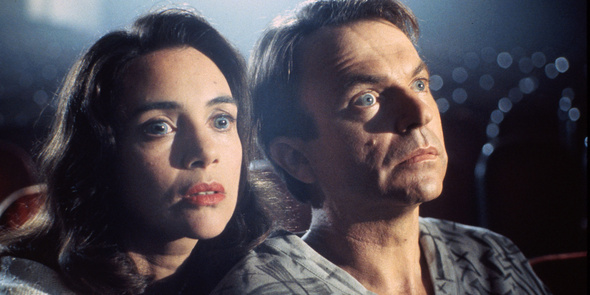
While best known for films like “The Thing,” “They Live” and “Halloween,” American director John Carpenter has crafted an expansive oeuvre, exploring with great success different genres such as horror and comedy. In “In the Mouth Of Madness,” a film filled with suspense and influenced by writer H.P. Lovecraft, we follow John Trent, played by Sam Neill, a freelance investigator hired by an insurance company to investigate the disappearance of a writer named Stutter Cane.
Differently from more well-known films by Carpenter like “The Thing,” “In the Mouth of Madness” takes a more subtle approach, preferring a subtle form of horror that changes the monsters and the physical horror and instead goes with a psychological horror, giving the spectator the information they need to construct an explanation in their minds that is never confirmed nor denied.
10. The Spirit of the Beehive (Victor Erice, 1973)
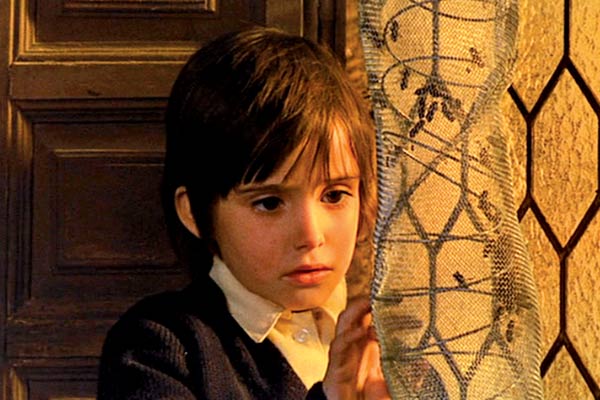
In “The Spirit of the Beehive,” the masterpiece in Victor Erice’s catalogue, we are subjected to an exploration of many subjects such as cinema, dreams and reality, tenderness, childhood, and the presence of innocence in a world that has already lost it.
Set in a rural town in Spain after the Spanish Civil War has ended, the film focuses on Ana, a young girl who is heavily affected after she sees a screening of 1931’s “Frankenstein” by James Whale. “The Spirit of the Beehive” is filled with poetical qualities, and it will surely resonate with those who have a relationship with cinema that goes beyond mere entertainment.
Aesthetically, the film evokes through its atmospheric elements the concept of innocence as embodied in the character of Ana but, in a way similar to that of Mexican director Guillermo del Toro, that innocence is set in world devoid of it: the cruel reality of post-Civil War Spain.
Without offering a definitive answer, Ana’s actions and the way she sees the world after being exposed to “Frankenstein” are left to the viewer to interpret, turning the passive act of watching something on a screen into something active that involves and stimulates the intellect, the emotions and the memory.
11. Mother! (Darren Aronofsky, 2017)

Having made history with films like “Pi,” “Black Swan” and “The Wrestler,” American director Darren Aronofsky has already left his mark in the history of cinema. In his filmography, the works that shine the most are those in which we can find solid psychological portraits of characters that traverse a complicated path in their search for transcendence.
In their search, the characters are often put in dark situations where they have to face the dark recesses of the human psyche. “Mother!”, the latest of his films, portrays in a very nerve-wracking manner the tension between a poet who wishes to be known by the world and his wife, who prefers to remain in solitude with him inside their house.
More than the investigation of a character, with “Mother!” Aronofsky crafted a visceral and gut-wrenching exploration of concepts like creation, marriage and sacrifice. The characters in “Mother!” aren’t as real or solid as in his other films; they are not meant to be.
Instead the film uses them in order to embody archetypes: while Javier Bardem’s character represents the part of the self that wants to go out into the world, Jennifer Lawrence’s character has a more passive role, instead preferring to be isolated, in contact only with that which she loves. Of course, the film is left open to interpretation, mostly in the end, for there are many nuances and a variety of details that allow each viewer to craft their own explanation of the events and of their meaning.
12. The Hour of the Wolf (Ingmar Bergman, 1968)
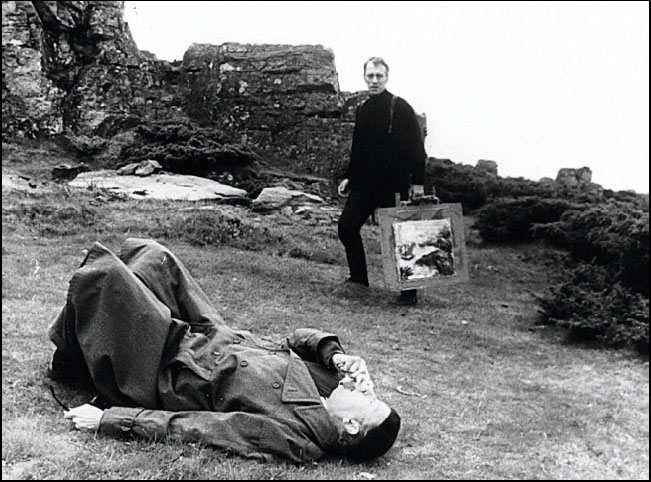
Ingmar Bergman is among the most important and praised directors in the history of film; he is an auteur admired with humbleness by every other legendary director. Sometimes referred to as the “last existentialist,” his films are concerned with the soul that searches for answers, and the individual searching for himself, abandoning god and the comfortable truths of society and replacing them with personal conclusions that often result in feelings of despair, grief, loneliness and pain.
While he is mostly known for “The Seventh Seal,” “Persona” and “Wild Strawberries,” his filmography is extensive and filled with masterpieces that explore the entire spectrum of existentialist thoughts and emotions.
“The Hour of the Wolf” is a surreal horror film, clearly influenced by German Expressionism, that follows Johan Borg, a painter played by the legendary Max von Sydow who, together with his wife, played by the also legendary Liv Ullmann, goes on vacation to the country, where he is faced with the inner demons that haunt him, resulting in his strange disappearance.
The film has a very unsettling aesthetic, one that fits well with the existential crisis faced by the protagonist, who is constantly tormented by unseen evils and uncanny hallucinations.
13. The Double Life of Veronique (Krzysztof Kieślowski, 1991)

If one thing can be said about “The Life of Veronique,” it’s that it is a beautiful film. And not just aesthetically beautiful, but rather beautiful in a wider, more spiritual sense. What Kieslowski managed to make is outstanding, a perfect mixture of storytelling, photography, music, poetry and magic, in which the story of a woman casually finding her double in a photograph feels intimate, personal, and deeply touching.
A verbal explanation of this film is useless, for the feelings and thoughts aroused by this film are not cerebral but emotional; it is a film so deeply ingrained in the cinematographic language that any sort of explanation feels like treason.
The themes explored in the film, such as identity, personal happiness, the connection to others, love, and many more, are treated with great delicacy and respect, as if they were something very dear and intimate, resulting in a film that soothes while also awaking a certain uneasiness in the spectator, who begins to wonder about the possibilities of casually finding one’s double. “The Double Life of Veronique” is a film that transcends the medium through its poetical qualities, acquiring a life of its own in the mind of the viewer.
14. The Exterminating Angel (Luis Buñuel, 1962)
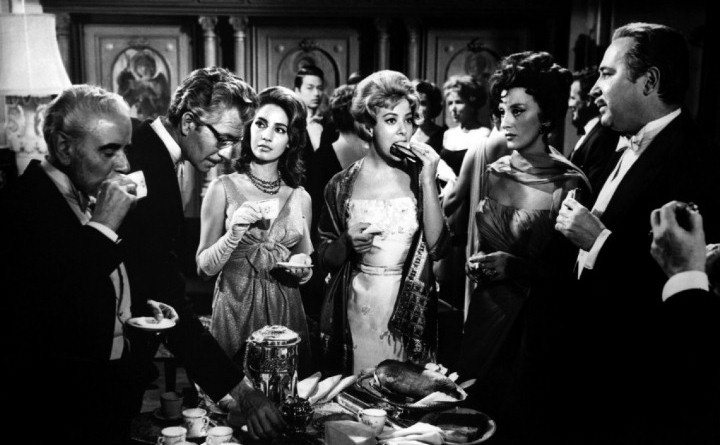
Luis Buñuel is the most important director in the history of cinema when it comes to surrealism. While most of the surrealist works of art are explorations of the subconscious mind with no direct relationship with reality, Buñuel used surrealism as a tool that could be employed to communicate a message. He widely criticized and exposed the contradictions and idiosyncrasies of bourgeois society.
Set in a high-class house in Mexico City, “El Ángel Exterminador” follows a group of high society individuals who get together for a party. When the party is over they decide to leave the house of their host and go back home, but they are unable to do so, for inexplicably they are unable to leave the room they are in.
The main element for the drama that unfolds in the film is the absurdity of the situation, for there is no logical explanation as to why they can’t leave the room – they just can’t. After some time goes by, they begin to lose the self control they usually have in social situations as they begin to act in a more primitive manner, allowing their passions and instincts to control them, exposing them as a part of a sector of society that they shun as members of the bourgeoisie.
15. Last Year at Marienbad (Alain Resnais, 1961)
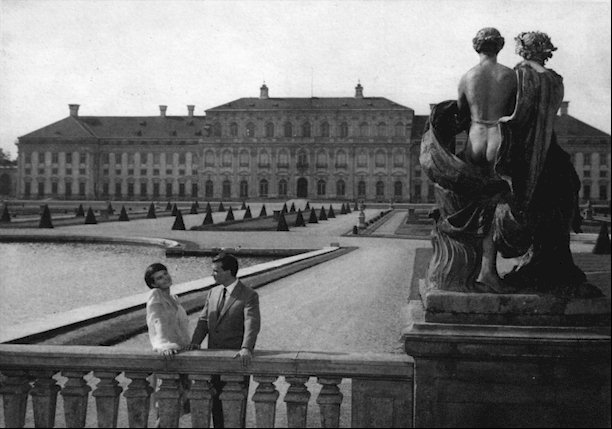
While not a surrealist, per se, French director Alain Resnais borrowed heavily from the surrealist language to create poetical films that transcend the conventional storytelling to forge experiences that arouse both the spirit and the intelligence.
Such is the case of “Last Year at Marienbad,” one the most well-known films by the director in which we see the memories of a man who is recalling the time spent with a woman at a château in the French town of Marienbad. Soon the memories of the man begin to waver and shift, and we as spectators begin to think that there is something wrong, and that perhaps we are not being told the truth.
The director toys and experiments with the conventions of the medium, offering a deconstructed story where the idea of truth as opposed to fiction loses its meaning. We, as an audience, are left to ponder on the memories of something that probably never happened, rejoicing ourselves with the entrancing photography, the twisted sense of the passage of time, and the intellectually stimulating deconstructed narrative.